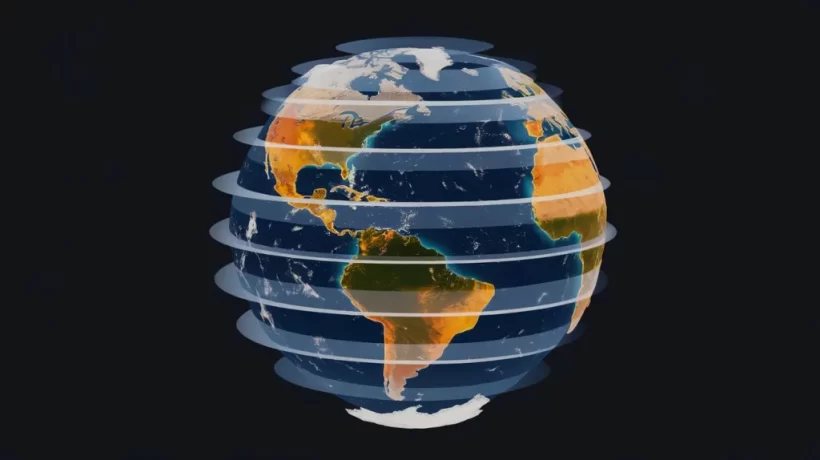Atmosphere – Pressure Belts of the World
Atmospheric Pressure
- Defined as weight of column of mercury 76 cm / 760 mm high at sea level
- Measured by Barometer
Isobar
- An isobar is an imaginary line drawn through places having equal atmospheric pressure reduced to sea level.
- Spacing of isobars represent pressure gradient i.e., rate of change of pressure
Variation in Atmospheric Pressure
- Variation in atmospheric pressure is responsible for horizontal movement of winds
- Some of the factors affecting atmospheric pressure are “Temp. of air, Altitude, Water Vapour, Gravitational force & Rotation of earth
| Rise in temperature | Pressure Decreases |
| Increase in Altitude | Pressure Decreases |
| Increase in Water vapour | Pressure Decreases (Weight of dry air > weight of moist air) |
| Gravitational force | Inversely proportional to square of radius of earth |
| Rotation of Earth | Exerts centrifugal force outwards |
Pressure Belts
- Horizontal distribution of pressure is expressed in terms of pressure belts
- Run in E – W direction along certain specific latitudes
- Total seven pressure belts
Thermally induced pressure belts
- Equatorial low & polar high
Dynamically induced pressure belts
- Subtropical high & sub polar low
Equatorial Low
- Low pressure belt extending up to 10 * N & S of equator
- Low pressure prevails due to high temperature, high water vapour in air & max. speed of earth’s rotation at the equator
- Surface winds are generally absent as winds rises vertically near this region, hence only vertical currents are found
Polar High
- From 80 – 90* N – S of equator → Polar Region
- Caused by extremely low temp. at poles, which remains below freezing point even during summers
- Air remains cold & dense resulting in high pressure
Subtropical High
- From 23 ½ * – 35 * N – S of equator
- A region of high pressure caused due to descent of cool air from high altitudes as shown back
- Descending air creates calm conditions with feeble winds in this high pressure belt
- Also known as Belt of Calm or Horse Latitude
Subpolar low
- 45 – 60 * N – S of equator
- Due to blowing away of air vertically up from the land surface mainly because of
- Cold air from poles becomes comparatively hot on reaching circles & rises vertically up
- Due to comparatively greater axial rotation of earth at 45 – 60* N – S than the poles
Wind
- Horizontal movement of air caused by horizontal atmospheric pressure difference
- Greater the pressure gradient, greater the velocity of wind
- Deflection of winds is caused by coriolis effect i.e., Winds get deflected to their right in N – Hemisphere & to their left in S – Hemisphere → Ferrels law
- Coriolis force changes only direction of wind not its speed
- Coriolis force speed is 0 at the equator & max at poles
- That means only horizontal component of coriolis force is considered









2 comments
thankyou very much to share the knowledge.
GREAT SUBJECT